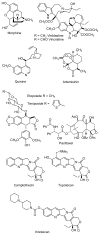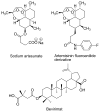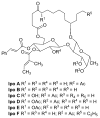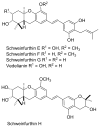Modern natural products drug discovery and its relevance to biodiversity conservation
- PMID: 21138324
- PMCID: PMC3061248
- DOI: 10.1021/np100550t
Modern natural products drug discovery and its relevance to biodiversity conservation
Abstract
Natural products continue to provide a diverse and unique source of bioactive lead compounds for drug discovery, but maintaining their continued eminence as source compounds is challenging in the face of the changing face of the pharmaceutical industry and the changing nature of biodiversity prospecting brought about by the Convention on Biological Diversity. This review provides an overview of some of these challenges and suggests ways in which they can be addressed so that natural products research can remain a viable and productive route to drug discovery. Results from International Cooperative Biodiversity Groups (ICBGs) working in Madagascar, Panama, and Suriname are used as examples of what can be achieved when biodiversity conservation is linked to drug discovery.
Figures














References
-
- Newman DJ, Cragg GM. J Nat Prod. 2007;70:461–477. - PubMed
-
- McChesney JD, Venkataraman SK, Henri JT. Phytochemistry. 2007;68:2015–2022. - PubMed
-
- Kingston DGI, Newman DJ. Current Opin Drug Disc Devel. 2002;5:304–316. - PubMed
-
- Butler MS. Nat Prod Rep. 2008;25:475–516. - PubMed
-
- Baker DD, Chu M, Oza U, Rajgarhia V. Nat Prod Rep. 2007;24:1225–1244. - PubMed
Publication types
MeSH terms
Substances
Grants and funding
LinkOut - more resources
Full Text Sources
Other Literature Sources

